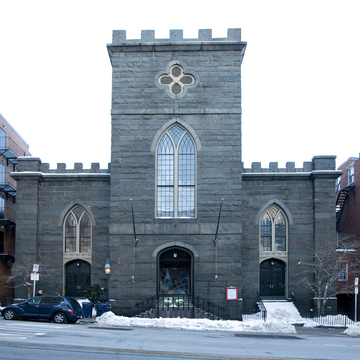Constructed for the congregation of the Reverend Lyman Beecher, this church was erected near Bowdoin Square, one of the fashionable residential neighborhoods of early-nineteenth-century Boston. The church represents an important early example of the Gothic Revival as commonly interpreted in New England, with thick stone walls and simply cut openings. Constructed of quarry-faced granite, its squat crenellated tower without steeple represents a common pattern among Boston-area churches of the 1830s and 1840s.
Attributed to Solomon Willard by his biographer William W. Wheildon, the Church of St. John the Evangelist would be his only Gothic design. Row houses from the 1830s and 1840s flank the church.


